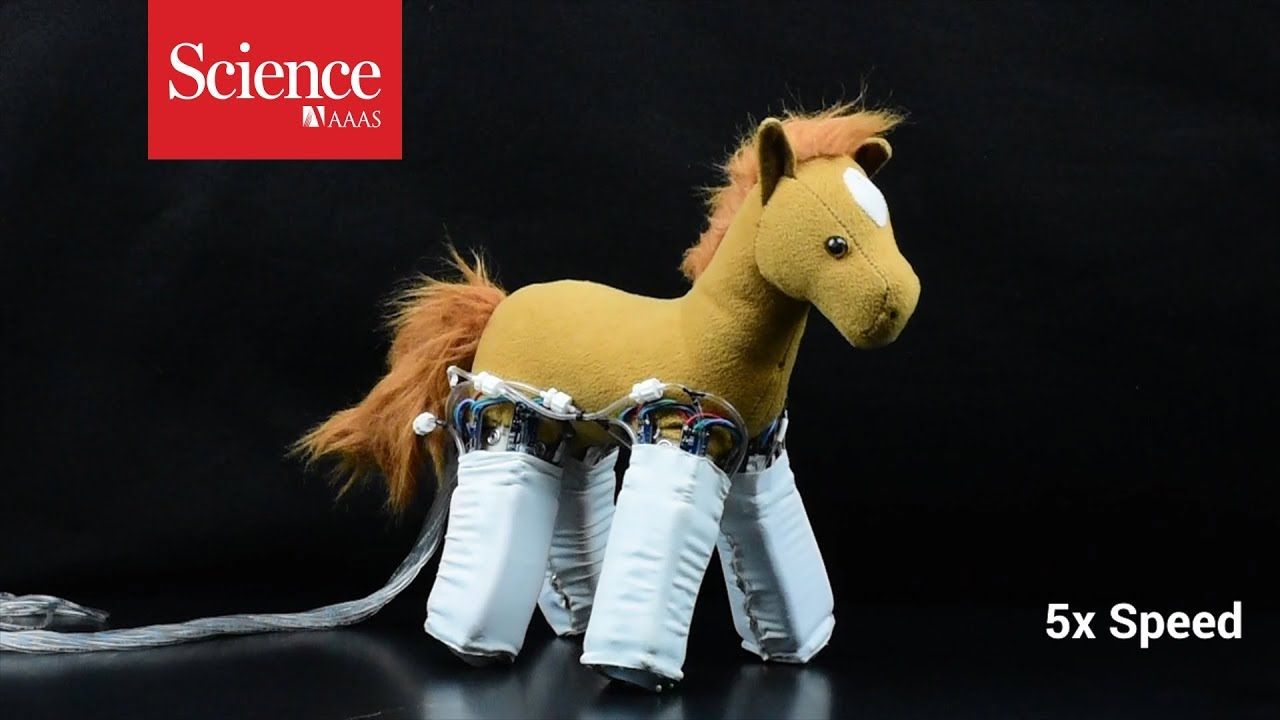When designing a robot, key components are the robot’s sensors, which allow it to perceive its environment, and its actuators, the electrical or pneumatic motors that allow the robot to move and interact with its environment.
Consider your hand, which has temperature and pressure sensors, but also muscles as actuators. The omni-skins, as the Science Robotics paper dubs them, combine sensors and actuators, embedding them into an elastic sheet. The robotic skins are moved by pneumatic actuators or memory alloy that can bounce back into shape. If this is then wrapped around a soft, deformable object, moving the skin with the actuators can allow the object to crawl along a surface.
The key to the design here is flexibility: rather than adding chips, sensors, and motors into every household object to turn them into individual automatons, the same skin can be used for many purposes. “We can take the skins and wrap them around one object to perform a task—locomotion, for example—and then take them off and put them on a different object to perform a different task, such as grasping and moving an object,” said Kramer-Bottiglio. “We can then take those same skins off that object and put them on a shirt to make an active wearable device.”










Comments are closed.